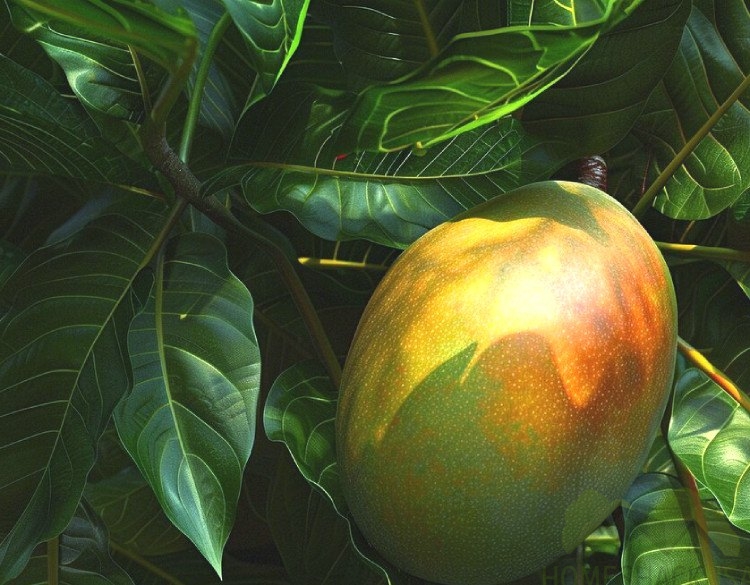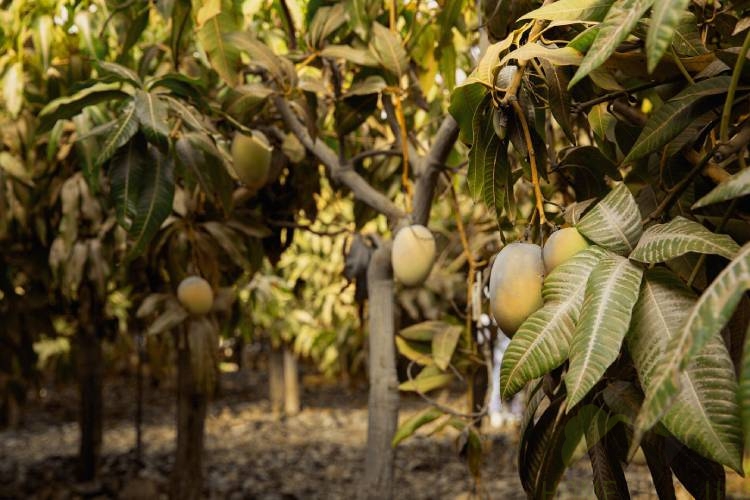Imagine stepping into your backyard and being greeted by the sweet aroma of ripe mangoes hanging from the trees. Growing mangoes at home is not just a fruitful endeavour but also a visually stunning one.
In this article, we will explore the art of cultivating mangoes in your yard and delve into the sheer beauty of this remarkable plant.
The beauty of mango plants
Mango plants are a sight to behold, with their lush green leaves and vibrant, fragrant flowers. The canopy of a mature mango tree provides a natural shade, creating a serene atmosphere in your outdoor space.
The intricacies of the mango’s growth stages add a dynamic element to your garden, making it a picturesque addition to any landscape.
Selecting the right mango variety
Not all mango varieties are created equal. Choosing the right one for your climate and soil type is crucial for successful cultivation.
Factors such as size, flavour, and resistance to pests should be considered when selecting the perfect mango tree for your backyard oasis.
Planting mango trees
Getting your hands dirty is the first step to a thriving mango garden. Learn the step-by-step process of planting mango trees, from preparing the soil to giving your sapling the best start in its new home.
Mango trees are picky when it comes to climate, soil and sun
Mango trees are picky about their living conditions, especially when it comes to soil and sun. Uncover the secrets of providing the ideal soil composition and sunlight exposure to ensure your mango trees flourish and produce the juiciest fruits.
Mango trees prefer full sun, which means they should receive direct sunlight for most of the day. A minimum of 6 to 8 hours of sunlight per day is recommended for optimal growth and fruit production.
Also, they do well in areas with high temperatures. In cooler climates, consider planting mango trees in a location that maximises exposure to sunlight and provides some protection from cold winds. Here are the main areas where mangoes can potentially grow in the U.S.:
South Florida
South Florida, particularly the southern parts of Miami-Dade County, is well-suited for mango cultivation. The region’s tropical climate, with warm temperatures and high humidity, mimics the native conditions of mangoes.
Southwest Florida
Some areas of Southwest Florida, including parts of Collier County, also have the warm and tropical climate needed for successful mango cultivation.
Hawaii
Hawaii, being a tropical state, provides favourable conditions for growing mangoes. However, the specific suitability depends on the island and the local microclimate.
Southernmost areas of Texas
In Texas, the southernmost parts, such as the Rio Grande Valley, have a subtropical climate that may support mango cultivation. However, success may vary depending on the specific location and microclimate.
California
In California, mangoes can be grown in certain areas with a Mediterranean or subtropical climate. Southern California, particularly in locations with minimal risk of frost, may offer suitable conditions for mango cultivation.
Watering and maintenance
Mango trees also require well-drained soil to thrive. Ensure that the soil is rich, loamy, and has good drainage. Waterlogged soil can lead to root rot and other issues.
Meanwhile, proper watering is essential for the health and growth of a mango tree. The frequency of watering can depend on various factors, including the climate, soil type, age of the tree, and local weather conditions.
Establishment phase (first year)
During the first year after planting, young mango trees require regular watering to establish a healthy root system. Water deeply, and ensure that the soil around the tree remains consistently moist but not waterlogged. This may involve watering several times a week, especially in dry or hot conditions.
Mature =trees
Once a mango tree is established and has developed a strong root system, it becomes more tolerant of dry periods. Mature trees generally do not require as much frequent watering as young trees. Watering every 7-14 days may be sufficient, but the frequency can vary based on factors such as local climate and soil conditions.
Soil moisture monitoring
Regularly check the soil moisture around the mango tree. The soil should be kept consistently moist, but not soggy. Allow the top inch or two of soil to dry out between watering to prevent waterlogged conditions.
Rainfall consideration
Take into account natural rainfall when determining the need for additional irrigation. In regions with regular rainfall, supplementary watering may be needed less frequently. Conversely, in arid or dry climates, more frequent watering may be necessary.
Adjust to seasonal changes
Adjust the watering frequency based on seasonal changes. Mango trees may require more water during hot and dry periods, while less water may be needed during cooler or rainy seasons.
Mulching
Apply a layer of organic mulch, such as wood chips or straw, around the base of the mango tree. Mulching helps retain soil moisture, suppress weeds, and regulate soil temperature.



